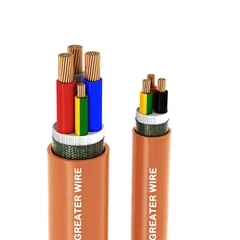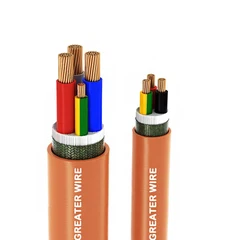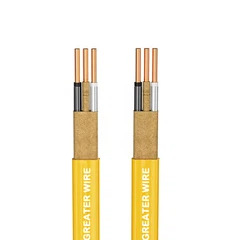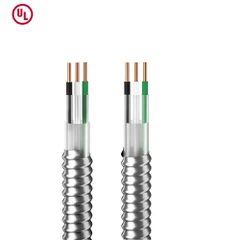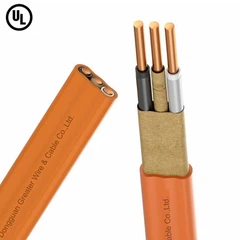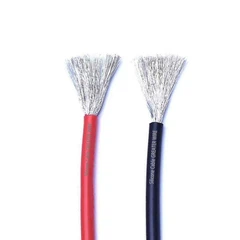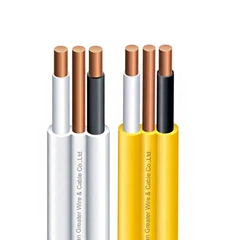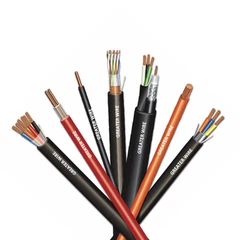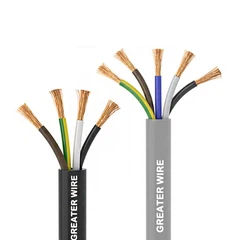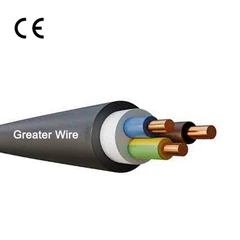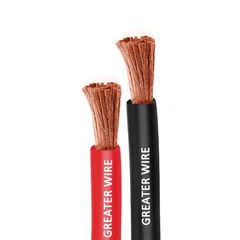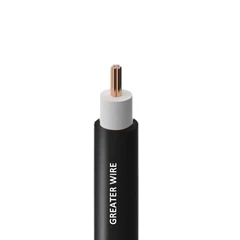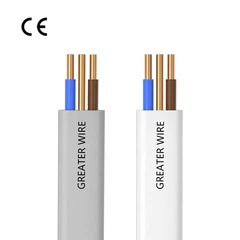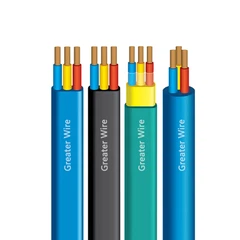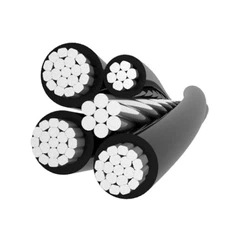In the North American market, UL 44 Thermoset-Insulated Wires and Cables is the key standard governing the design, materials, performance, and testing of building wires. Among the many wire types covered by UL 44, XHHW and RHW-2 are two commonly used types for building and industrial wiring. Although they may appear similar, they differ in conductor materials, insulation systems, thickness, voltage ratings, and application environments. This article provides a detailed comparison based on UL 44 requirements and validated data from major manufacturers such as Southwire and Encore Wire.
Standard Overview and Naming
UL 44 specifies conductor materials, insulation types, minimum insulation thickness, voltage ratings, temperature limits, and testing requirements for thermoset-insulated wires.
- XHHW stands for Cross-linked Thermoset Insulation (X), High Heat resistance (HH), and Moisture resistance (W).
Traditional XHHW: 90 °C (dry) / 75 °C (wet)
- XHHW-2: 90 °C (dry/wet)
- RHW-2: Rubber insulation (R), Heat resistance (H), Moisture resistance (W), "-2" indicates 90 °C (dry/wet).
- RHW (without "-2"): 75 °C (wet)
- RHW-2: 90 °C (dry/wet)

Conductor Systems
UL 44 permits the use of copper (bare or tinned), as well as aluminum and AA-8000 series aluminum alloy conductors. Both XHHW-2 and RHW-2 wires are available in copper and aluminum versions from leading manufacturers.
Stranding is typically Class B (standard building wire stranding), with options for compressed or compact stranding to reduce overall diameter and improve conduit fill efficiency.
Insulation Materials
- XHHW / XHHW-2:
Insulation is restricted to cross-linked polyethylene (XLPE) or EPCV (ethylene-propylene copolymer) without any external covering. Most commercial products are XLPE-based.
- RHW-2:
Uses a composite insulation system, which may include EPR, EP, CPE, EPCV, or XLPE. RHW-2 typically has an outer finish covering, making it more versatile in meeting requirements for oil resistance, sunlight resistance, and outdoor durability.
- Key difference:
XHHW-2 has a simpler insulation system designed for electrical efficiency and compact size, while RHW-2 offers greater environmental resistance due to its composite insulation and protective outer layer.
Voltage Ratings
UL 44 framework allows for 600 V, 1000 V, and even 2000 V constructions depending on insulation thickness and testing.
- XHHW-2: Commonly rated 600 V or 1000 V (per Southwire and Encore Wire data).
- RHW-2: Commonly rated 1000 V, but certain products are certified for 2000 V applications (particularly in solar and utility projects).
Temperature Ratings
- XHHW-2: 90 °C (dry/wet)
- XHHW: 90 °C (dry) / 75 °C (wet)
- RHW-2: 90 °C (dry/wet)
- RHW (without "-2"): 75 °C (wet)
Thus, both XHHW-2 and RHW-2 provide consistent 90 °C ratings for both dry and wet locations.
XHHW-2 & RHW-2 Minimum Insulation Thickness
UL 44 specifies minimum insulation thickness based on conductor size. A clear difference appears between XHHW-2 and RHW-2.
- XHHW-2 (600 V, UL 44 Table 15.3):
AWG 14–10: 30 mils
AWG 8–2: 45 mils
AWG 1–4/0: 55 mils
250–500 kcmil: 65 mils
600–1000 kcmil: 80 mils
- RHW-2 (600 V, UL 44 Table 15.4):
AWG 12–10: 45 mils
AWG 8–2: 60 mils
AWG 1–4/0: 80 mils
250–500 kcmil: 95 mils
600–1000 kcmil: 110 mils
- RHW-2 (2000 V, UL 44 Table 15.5):
AWG 14–10: 80 mils
AWG 8–2: 95 mils
AWG 1–4/0: 110 mils
250–1000 kcmil: 125 mils
RHW-2 generally requires thicker insulation than XHHW-2 at the same voltage rating, resulting in a larger overall diameter.
XHHW-2 wire & RHW-2 wire:Flame, Oil, Gasoline, And Sunlight Resistance
Both XHHW-2 and RHW-2 must meet UL 44 requirements for gasoline and oil resistance, flame tests (VW-1/FT4), and cold bend/impact tests.
In practice:
- XHHW-2 is usually optimized for indoor conduit use, with optional oil-resistant versions.
- RHW-2 is more commonly available in sunlight resistant, direct burial, -40 °C cold bend, and outdoor-rated versions, due to its composite insulation and outer covering.
XHHW & XHHW-2 & RHW-2 Typical Applications
| Dimension | XHHW / XHHW-2 | RHW-2 |
|---|---|---|
| Common Use | Indoor branch circuits, feeders in conduit, panelboard wiring | Service entrance, feeders, outdoor/roof, direct burial, solar |
| Voltage Rating | 600 V (some 1000 V versions) | 1000 V standard; 2000 V available |
| Temperature (dry/wet) | 90 °C / 90 °C (XHHW-2) | 90 °C / 90 °C |
| Insulation Type | XLPE/EPCV, no covering | Composite insulation + outer covering |
| Insulation Thickness | Thinner (e.g., 30–80 mils at 600 V) | Thicker (45–110 mils at 600 V; up to 125 mils at 2000 V) |
| Outdoor/Direct Burial | Limited | Widely available as Sunlight Resistant, Direct Burial |
| Conductor Options | Copper or aluminum (AA-8000) | Copper or aluminum (AA-8000) |
Manufacturer Data Verification
- Southwire XHHW-2: Rated 600 V / 1000 V, 90 °C dry/wet, insulation thickness per UL 44 Table 15.3.
- Southwire RHH/RHW-2: Rated 1000 V, insulation thickness matches UL 44 RHW tables.
- Encore Wire XHHW-2: Thickness and dimensions aligned with UL 44 requirements.
- Encore Wire / Prysmian RHW-2: 1000 V and 2000 V PV/RHW-2 products confirm UL 44 higher-voltage provisions.
UL 44 Engineering Selection Guide
Indoor conduit wiring (branch circuits/feeders)
→ Choose XHHW-2 for compact size and easy pulling.
Service entrance, outdoor, rooftop, or direct burial
→ Choose RHW-2, especially for sunlight resistance, oil/gasoline resistance, and -40 °C flexibility.
Large conductors, cost-sensitive projects
→ Consider AA-8000 aluminum versions of XHHW-2 or RHW-2 (verify equipment compatibility).
Voltage margin
→ Use 1000 V or 2000 V RHW-2 versions if project specifications allow.
RHW-2: Uses composite insulation with an outer layer, generally with thicker insulation and better suited for outdoor, direct burial, and harsher environments.
Both types share the 90 °C wet/dry temperature rating under UL 44, but differ significantly in insulation design, thickness, and application scope.
Engineers should select based on installation environment, voltage requirements, and conduit space constraints, cross-checking UL 44 data with manufacturer specifications.

